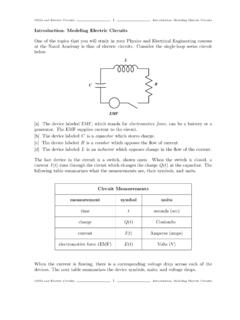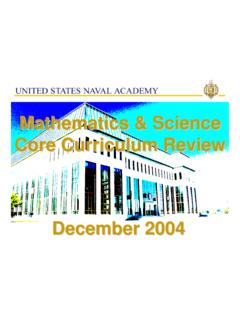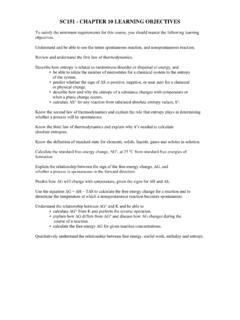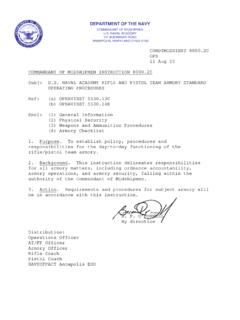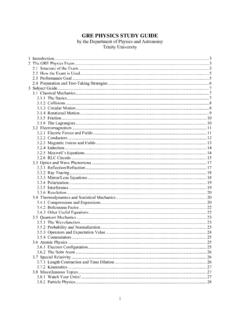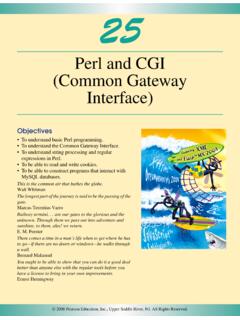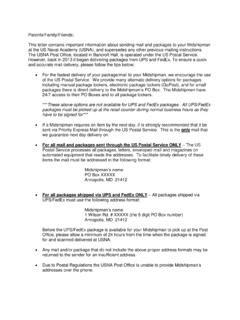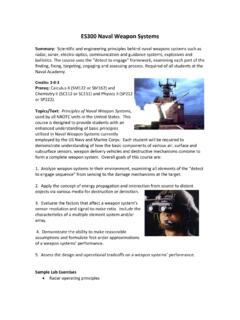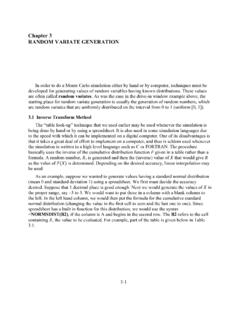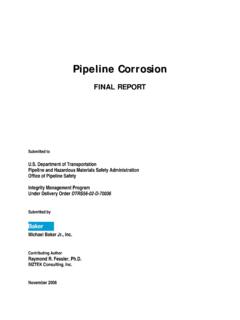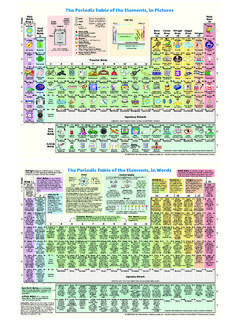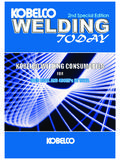Transcription of CATHODIC PROTECTION DESIGN
1 CATHODIC PROTECTION DESIGNSTRUCTUREM etal, DESIGN Life, Dimensions, Coatings, OtherCOST AND IMPLEMENTATIONLOCATIONE nvironmental Conditions, Other StructuresANODE AND HARDWARE SELECTIONC urrent Output, DESIGN Life, TYPEI mpressed Current, Sacrificial CURRENT DEMANDI nitial, Mean, CRITERIAP otential for CATHODIC Protectionfrom Swain Classnotes (1996) 2 Table of Contents Introduction .. 3 Structure .. 3 Location .. 3 CP Criteria .. 4 Potential Values .. 4 300 mV Shift .. 5 100 mV Shift .. 5 E-log-I Curve .. 6 Anodic Current Discharge Points .. 6 CATHODIC PROTECTION Current Demand .. 6 Recommended Practice RP B401, Det Norske Veritas .. 6 Uncoated Steel .. 7 Coated Steel ..7 Pipeline 9 Concrete .. 9 Current Requirements for Pipelines in Soils of Different 10 Current Requirements for Ship 11 Cp Type .. 12 Anode 13 Anode Resistance to Ground .. 16 Anode Ground Anode Current Output.
2 18 Anode Size, Weight, Number, Distribution and DESIGN Life .. 18 Cost and 21 Oil Platform 21 Structural 21 Current 21 Sacrificial Anode DESIGN for Uncoated Structure .. 22 Sacrificial Anode DESIGN Coated Structure .. 26 Impressed Current Anode DESIGN .. 27 Ship Hull PROTECTION .. 29 INTRODUCTION Metallic structures in contact with water, soil, concrete, and moist air are subject to corrosion. CATHODIC PROTECTION (CP) is one of the few methods that successfully mitigates corrosion. It can be applied in any situation where the environment surrounding the metal acts as a conductor for electric current. It has been successfully applied to offshore structures, ships, boats, propellers, moorings, pipelines, storage tanks, piers, jetties, bridges, aquaria, instrumentation etc. This handout is designed as an introduction to CP DESIGN .
3 As such, it does not cover all aspects of the subject. Therefore, the student should realize the limitations of his/her knowledge and consult other literature or experts in the field when necessary. STRUCTURE CP DESIGN begins with a thorough understanding of the structure to be protected. This includes the following information: Metal type(s) Operating conditions Dimensions and surface area Coatings Data from previous structures and CP systems DESIGN life LOCATION The environmental conditions are determined by the location of the proposed installation. Factors such as climate, electrolyte conductivity and chemistry, physical loading, and biological activity, all impact CP requirements. These factors are generally allowed for in the CP current demand and polarization potential criteria. CP CRITERIA Potential measurements are the most commonly used criteria to ascertain the level of CP afforded to metals and alloys.
4 CP potential values vary according to the metal and the environment. Corrosion is likely to occur at potentials which are more positive than the protected value. Damage may also occur if the metal is overprotected ( the potential too negative). The most common error associated with potential measurements is a result of IR drop. This is the displacement of measured metal potential due to current flow through the electrolyte. High electrolyte resistivity and high current densities can cause significant differences between the measured and actual metal potential. Potential Values The measurement of potential with respect to a standard reference electrode is probably the most common method of evaluating the degree of CATHODIC PROTECTION afforded to a structure. Typical CATHODIC PROTECTION potentials for commonly used metals ref.
5 Ag/AgCl reference electrode (seawater) are provided in Table A more detailed summary of PROTECTION potentials for steel in seawater is provided in Table Table Approximate freely corroding and protected potentials of metals in seawater (may vary according to velocity and conditions). Metal or Alloy Freely Corroding Potential (V) ref. Ag/AgCl Protected Potential (V) ref. Ag/AgCl 316,304 Stainless (passive) Copper Alloys 316,304 Stainless (active) Steel Aluminum Alloys Zinc/Aluminum Anodes Magnesium Anodes 5 Table Potential values for corrosion and PROTECTION of steel in seawater V ref. Ag/AgCl Condition V ref. Zn Heavy Corrosion Freely Corroding Steel + Some PROTECTION + CATHODIC PROTECTION + Some Over + PROTECTION + Over PROTECTION May Cause Paint Blistering and Flaking
6 300 mV Shift The NACE Standard, RP-02-85 states that a minimum negative ( CATHODIC ) voltage shift of 300mV, produced by the application of protective current should provide CP to iron and steels. The voltage shift is measured between structure surface and a stable reference electrode contacting the electrolyte. This criteria does not apply to structures in contact with dissimilar metals. 100 mV Shift The NACE Standard, RP-02-85 states that a minimum negative ( CATHODIC ) voltage shift of 100mV measured between the structure surface and a stable reference electrode contacting the electrolyte should provide CP to iron and steel. This polarization voltage shift is determined by interrupting the protective current and measuring the instant off and polarization decay. The instant off value is obtained immediately following the interruption of the CP current.
7 The voltage shift is equivalent to the IR drop created by the CP current and electrolyte resistance. The polarization decay is measured as the change in potential over a period of time from the instant off value. 6 E-log-I Curve The NACE Standard, RP-02-85 states that a structure-to-electrolyte voltage at least as negative ( CATHODIC ) as that originally established at the beginning of the Tafel segment of the E-log-I-curve should provide CP to iron and steel. This structure-to-electrolyte voltage shall be measured between the structure surface and a stable reference electrode contacting the electrolyte at the same location where voltage measurements were taken to obtain the E-log-I curve. Anodic Current Discharge Points The NACE Standard, RP-02-85 states that a net protective current from the electrolyte into the structure surface as measured by an earth current technique applied to predetermined current discharge (anodic) points of the structure should provide CP to iron and steel.
8 CATHODIC PROTECTION CURRENT DEMAND The CATHODIC PROTECTION current demand is the amount of electricity required to polarize the structure to a level that meets the criteria described in Section 4. This may be obtained from a trial polarization of the structure at the installation site, a trial polarization of a metal test coupon at the installation site, or from conservative estimates obtained from historical information obtained from previous structures operating under the prescribed conditions. For planning and DESIGN purposes, it is often possible to rely on conservative estimates provided by recommended practice. There are several sources for this information. The most current one is Recommended Practice RP B401, CATHODIC PROTECTION DESIGN , Det Norske Veritas Industri Norge AS, 1993. Recommended Practice RP B401, Det Norske Veritas The CP current densities are calculated for different environmental conditions and conditions of the steel ( uncoated, coated, concrete reinforcing steel, pipeline).
9 Uncoated Steel Three DESIGN current densities are given: initial, final, and average. Initial This is the current density required to effect polarization of the initially exposed bare steel surface. It assumes some atmospheric rusting and/or millscale. The initial current density is higher because of lack of calcareous scales ( CATHODIC chalks). A proper initial current density enables rapid formation of protective calcareous scales. Final This is the current density required to protect the metal surface with established marine growth and calcareous layers. It takes into account the current density required to repolarize the structure in the event of removal of these layers by storms, cleaning operations etc. Average This is the anticipated current density required once the CATHODIC PROTECTION system has reached its steady state.
10 The average or maintenance current density is used to calculate the minimum mass of anode material required to protect the structure throughout the DESIGN life. Table Initial, final, and average current densities for various climatic conditions and depths (climatic conditions are based on yearly range of average surface water temperatures). DESIGN Current Densities (A/m2) Tropical >20oC Sub-Tropical 12o-20oCTemperate 7o-12oC Arctic <7oC Depth (m) Initial Final Average Initial Final AverageInitial Final AverageInitial Final Average0 - 30 >30 Coated Steel The use of coatings on steel dramatically reduces the current demand on the CATHODIC PROTECTION system. This can save on the cost and structural weight associated with sacrificial anode systems.
